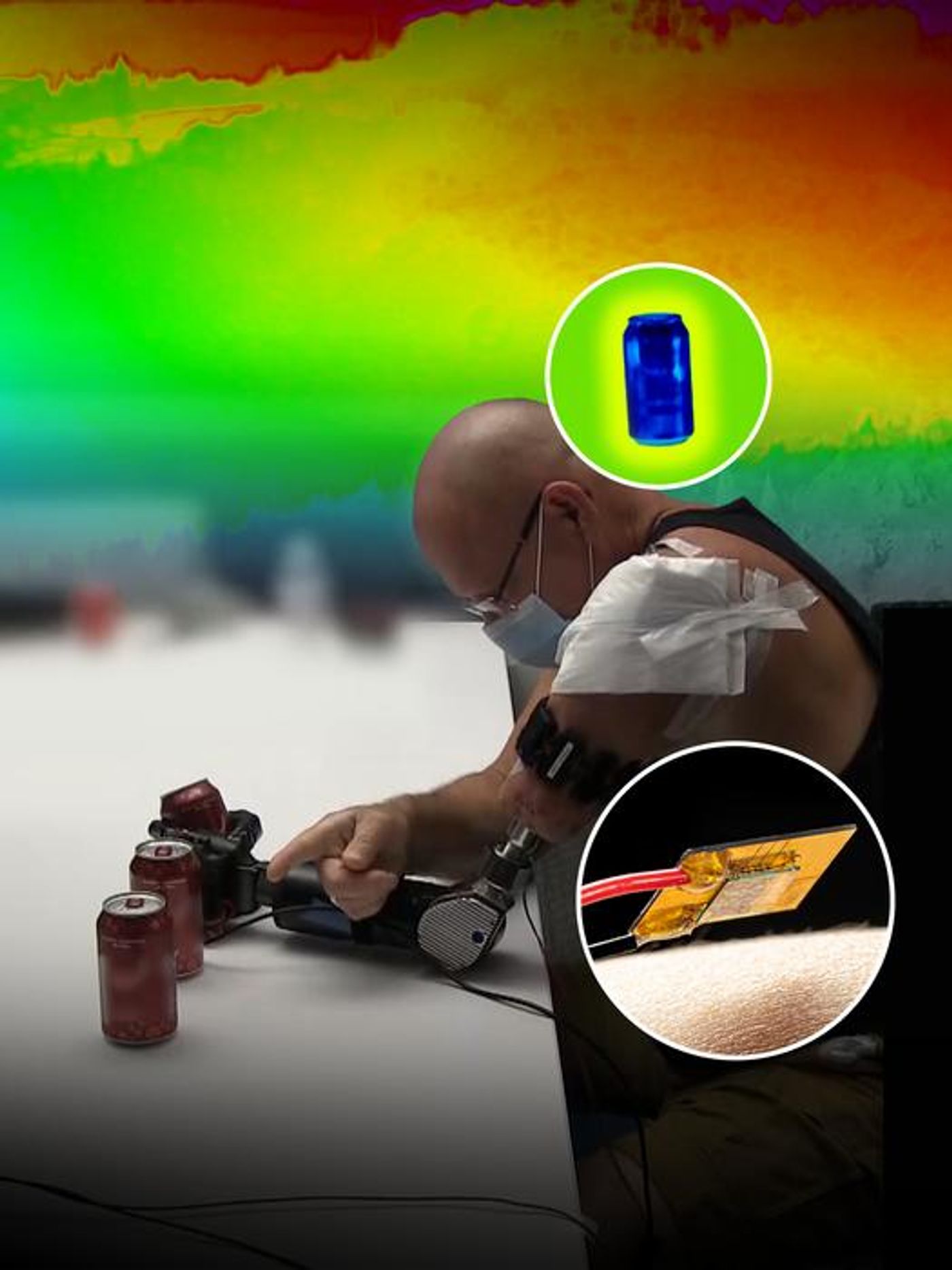Restoring Temperature Sensation in Prosthetic Limbs: A Collaborative Study
What if individuals with prosthetic limbs were able to feel sensations like heat and cold? This is what a recent study published in Nature Biomedical Engineering hopes to address as a team of researchers from Johns Hopkins Applied Physics Laboratory (APL) worked with neuroscientists to help individuals with prosthetic limbs feel heat and cold using the APL-developed wearable thin-film thermoelectric cooler (TFTEC). This device was first created in 2016 and holds the potential to not only help improve prosthetics but could also be used in a variety of other commercial and industrial applications, as well.
Image of prosthetics tester, Johnny Matheny, examining the temperatures of several cola cans with a modular prosthetic limb and thin-film thermoelectric device (TFTEC), both of which were developed by the Johns Hopkins Applied Physics Laboratory. (Credit: Ed Whitman / Johns Hopkins University Applied Physics Laboratory)
“We’ve known that we can stimulate specific parts of someone’s amputated limb to feel sensations of touch and vibration, but no one has been able to create a cooling sensation with the speed, intensity, and efficiency to restore natural thermal perception with a prosthetic system,” said Bobby Armiger, who leads the Exploratory Science Branch with APL’s Research and Exploratory Department and is a co-author on the paper.
2021 video showing prosthetics tester, Johnny Matheny, using his prosthetic hand to play the piano.
As stated, TFTEC was first created in 2016, but for an entirely different purpose, and was developed by Dr. Rama Venkatasubramanian of APL for several Department of Defense applications in the field of nanoengineering. This caught the attention of Armiger, whose own curiosity led him to pursue the technology for use in phantom limbs with the goal of improving prosthetics for amputees. After some collaboration between teams of Armiger, Dr. Venkatasubramanian, roboticists, and neuroscientists, a wearable version of TFTEC was produced and examined for the study to demonstrate its efficiency.
Participants included amputees and non-amputees. The researchers found the amputee participants were able to perceive temperature sensations in their phantom hand more than 48 weeks after initial installation of the TFTEC, which potentially indicates a years-long use of TFTEC for users. In terms of efficiency, the TFTEC evoked cooling feelings 8 times quicker and up to triple the intensity compared to traditional bulk thermoelectric devices, while requiring only half the energy and 1/600th the mass.
“When we started our work in March 2020, we realized that within just a couple of trials we could stimulate the phantom limbs of an amputee,” said Dr. Venkatasubramanian, who is also a co-author on the paper. “We heard participants say, ‘Yes, I felt an immediate cold feeling here and a tingle there.’”
With this successful study, the wearable TFTEC could open doors to applications in industry, research, satellite energy harvesting, and lasers.
How will this wearable TFTEC benefit amputees and other applications in the coming years and decades? Only time will tell, and this is why we science!
As always, keep doing science & keep looking up!
Sources: Nature Biomedical Engineering, EurekAlert!, Johns Hopkins Applied Physics Laboratory









